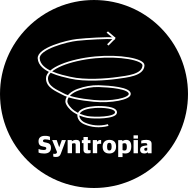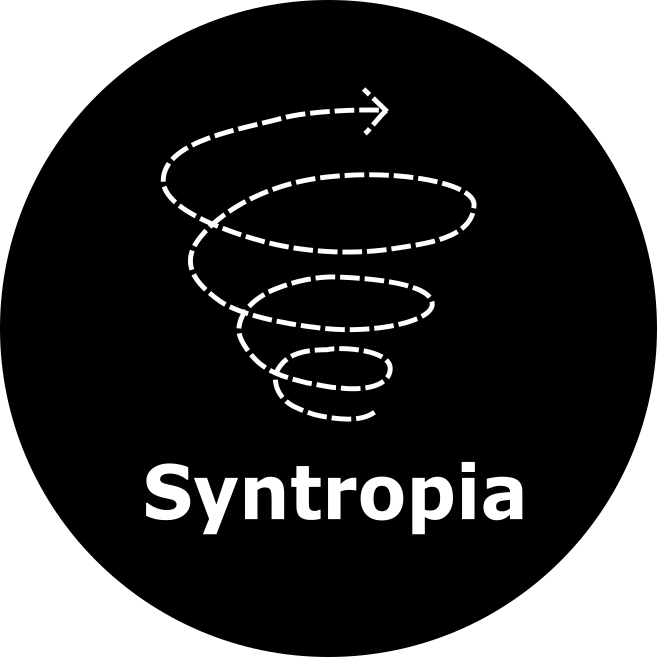What is the Difference Between Syntropic Farming and Permaculture?
There have been many questions and comparisons generated by the emergence of Syntropic Agriculture in relation to a Permaculture “Food Forest”. This is a simple question to answer really, but in order to do this we must zoom back out to get perspective on what we are dealing with. Looking at these amazing things brought forward by dedicated and hard working people, we must earnestly assess the true intentions behind these gifts, and once we do this, we can understand how complimentary they truly are, and how powerful they are in combination.
In Permaculture, there are many insights into the functions of nature, particularly observations where we are made aware of the power of different elements in combination, such as edge effect. These and many other extremely useful insights feature all throughout Permaculture literature, which are very useful to keep in mind when planning our design, and here is where Permaculture moves into its true and stated role - design, design for living. In the framework of Permaculture design, all of the very important insights and observations made are indications to the designer of what to keep in mind when planning - including planning of production. In the framework of this, there is no specific, precise and defined system of production outlined - it is not trying to suggest that it is a “how to farm” methodology, it is a design framework for how to live, using the three ethics of:
EARTH CARE
PEOPLE CARE
RETURN OF SURPLUS
This structure and set of ethics is of the utmost importance to how we can best function as individuals and society, and this is the gift of Permaculture Design. Permaculture is an absolutely inclusive structure, if your method of production fits in with the three ethics, you are succeeding.
From this perspective of Permaculture - a design framework on how to live within the three ethics, we can move to how we produce our yields within this. From the beginning of Permaculture there has been many efforts to produce in a sustainable and regenerative way - ways of feeding ourselves and community while generating a surplus that gives back to planet and people, and amongst many of the excellent things achieved, there is probably none more well known than the “Food Forest”. It is at this point that I will mention again, that Permaculture is an open design framework that works to achieve the specified ethics. There is nothing in Permaculture literature that suggests any native, in house, Permaculture born method of production - quite the opposite, Permaculture literature is full of hundreds of indications, suggestions and recommendations of methods from around the world and all through time - it is a truly open platform, that’s why it is so good - it is not limited to what can be generated within its own structure.
So let’s go back to that term - the Permaculture “Food Forest”. I have heard many experts from Permaculture speak about this, especially Bill Mollison. From what I have heard, I have heard less about any specific ways things should be done, but everything about what should be achieved, with Bill demonstrating lots of examples, with his own food forests and those of others, some even much older than his, and all of them different in their own ways, yet with the same outcomes in mind.
This is where Syntropic Agriculture comes in, it has the outcomes that are required to meet the three ethics of Permaculture, in short it is another food forest. In this light, I don’t see much sense in comparing it to a Permaculture “Food Forest”, it is redundant - the concept is fluid and open, it is the same thing. Sure, there are many people creating and managing food forests with a Permaculture label, but these are still not all exactly the same - one can create and manage a permaculture food forest, with legume planting, “chop and drop”, layers etc, and so can another, both can still have these functions within them yet be very different. Syntropic Agriculture differs in this respect, as it is very specific and precise - there is a clear right way and wrong way, it is based on a framework of how plants are arranged according to lifecycle and strata, how they relate through the multiple effects of the influence of time, creating a dynamic - a “consortium", which is part of a "macro organism", and then managing this through species succession, continually increasing the quantity and quality of consolidated life (syntropy). Syntropic Agriculture is planting and managing a food forest - it achieves all of the desired outcomes whilst doing a remarkable job of supporting the three ethics of Permaculture.
Syntropic Agriculture has its genesis in the same place where many of the other references in Permaculture are in methods of production - subsistence and sustainable agriculture. Necessity is the mother of invention, and a fellow by the name of Ernst Gotsch developed this framework to achieve the objective of supporting his crops through ecologically driven functions whilst regenerating his land.
I don’t see the need to make a value comparison between Permaculture “Food Forests” and Syntropic Agriculture, I see Syntropic Agriculture as a way to achieve a food forest, thus being a valuable addition to the open framework of Permaculture design. Permaculture is how to live, where Syntropic Agriculture is a specific and precise methodology of production - how to “obtain a yield” in the words of David Holmgren, which supports a Permaculture way of living perfectly.
There has been a huge amount of interest from the Permaculture movement in Syntropic Agriculture, this is how I came to adopt it, and I can see this extremely effective form of production adding to the toolkit within the Permaculture design framework, which will benefit the movement significantly. Permaculture is a true open source structure and by adopting Syntropic Agriculture, it is doing what it does best.

